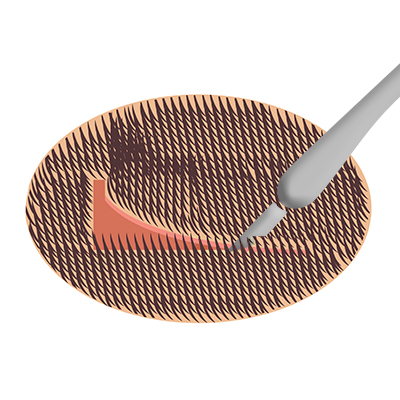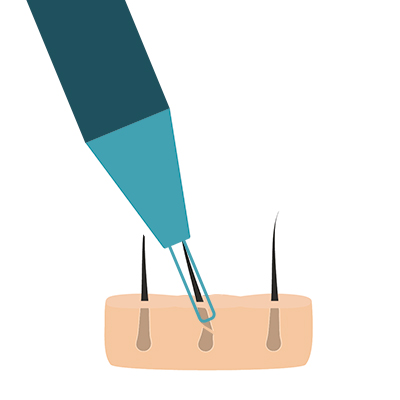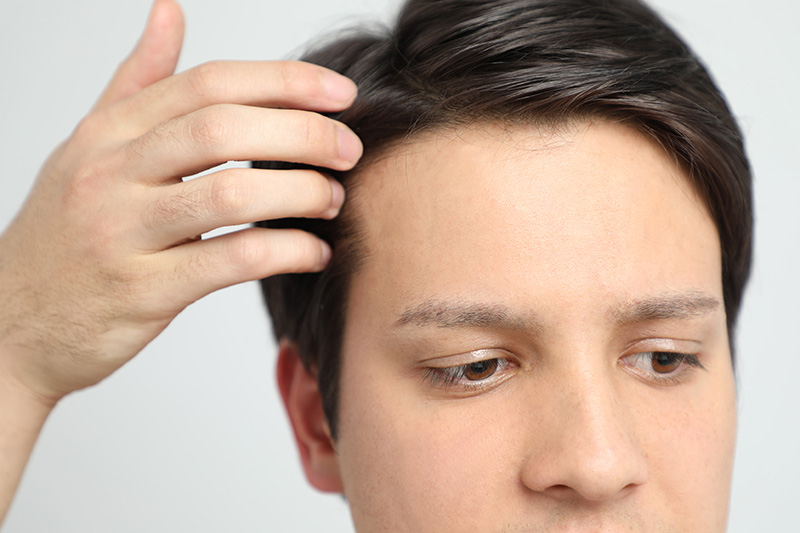During Follicular Unit Extraction (FUE) hair transplants, a transection is the accidental cutting or harming of the hair bulb. While this may seem innocuous, hair bulbs are the source of hair growth. In other words: the more hair follicles that are cut or harmed, the less successful the transplant is. So how can one minimise the risks for follicle transections?
What is a Follicular Unit Extraction?
First of all, for those who aren’t familiar with the term, FUE is a surgical procedure in which hair follicles are removed from a patient’s scalp from a shaved donor area, often at the back of the scalp. These are then re-implanted in the recipient zone eg: front of the scalp, mid vertex or crown areas, to add hair density or to add hair where there is none. In FUE surgery, hair follicles are extracted one at a time with a punch, and when done correctly, leave no noticeable scars.
FUE differs from FUT/FUG strip-harvesting which requires the surgeon to remove a strip of skin from the patient’s scalp, before dissecting it into individual hairs to be implanted. As you might imagine, this method is quite extreme. The patient is left with a noticeable linear scar on the back of the scalp. This long scar is usually visible long after healing, especially if the hair at the back of the head is kept short. If that were not bad enough, FUT/FUG also causes excessive transections.
How do hair transections occur?
Hair transections can occur during the two different hair transplant stages in both FUT/FUG and FUE: when extracting hair follicles from the donor area and when implanting the follicles in the recipient area.
 Transections can happen during FUT/FUG when the scalpel cuts through the follicle or damages the hair bulb.
Transections can happen during FUT/FUG when the scalpel cuts through the follicle or damages the hair bulb. Transections can happen during FUE if too much pressure is applied to the scalp when punching grafts, by using of blunt or incorrect instruments.
Transections can happen during FUE if too much pressure is applied to the scalp when punching grafts, by using of blunt or incorrect instruments.Regardless of the surgeon’s skill there will always be excessive and unnecessary transections in FUT/FUG surgery. The surgeon uses a blade to cut into the donor area of the scalp. As the incision is made across the back of the head to remove the strip, the blade cuts through follicles. They are damaged in the process of cutting away the hair bulbs. Damaged follicles are useless and cannot be used when transplanting.
Transections can also occur when performing FUE surgery. A surgeon may apply too much pressure to the scalp when doing punch grafts, use blunt instruments, or use incorrect tools (especially when implanting grafts).
It is of the utmost importance that the hair transplant surgeon participates in the entire procedure and is responsible for extracting and implanting the hair follicles/grafts. Some surgeons only supervise operations that are carried out by hair transplant technicians. Our surgeon is involved every step of the way; he participates and does not only oversee the procedure. He provides a premium FUE experience with exceptional results and ensures that minimal hair transections occur. This gives the best chance of healthy growth of the grafts and of transplant success!
How we avoid hair transections
Hair transections can be avoided by using proper tools. We only use specialty instruments developed by industry leader Dr John Cole for the FUE procedure, there are no scalpels involved. This means that when done properly, scarring is minimal to the naked eye, and the risk of transection is greatly reduced.
At Melbourne Hair Transplant Clinic, quality control and measuring transection rates is standard practice during FUE hair transplants. Some clinics implant transected follicles; we do not. We only implant grafts that have been successfully extracted in tact.
What is an acceptable transection rate?
A certain number of transections is normal. However, it is important to minimise the transection rate as a patient can only have a finite amount of donor follicles.
A skilled surgeon will have a transection rate of about 5% while the transection rate of the least skilled is between 20 or 75%. Our surgeon is an expert in the field of FUE surgery and has a transection rate under 3%. Patients should choose a clinic with appropriate quality control and ongoing monitoring of transection rates.
Key Takeaways
- Hair transection is where the bulb part of the hair follicle is harmed and will hinder, or even stop, hair growth.
- Minimising hair transection involves using proper tools and practicing quality control, under the supervising surgeon.
- FUE hair surgeons should be properly trained and experienced in extracting and implanting grafts.
- Surgeons should participate in surgery and not simply oversee the surgery.
- Technicians should not be allowed to punch grafts.
- Other hair clinics may describe this procedure differently, however, it’s the same. The main difference in FUE procedures is that each practitioner will use their own techniques and instruments.
- To find out more about hair transplants in Melbourne, book an appointment with the doctor today.








